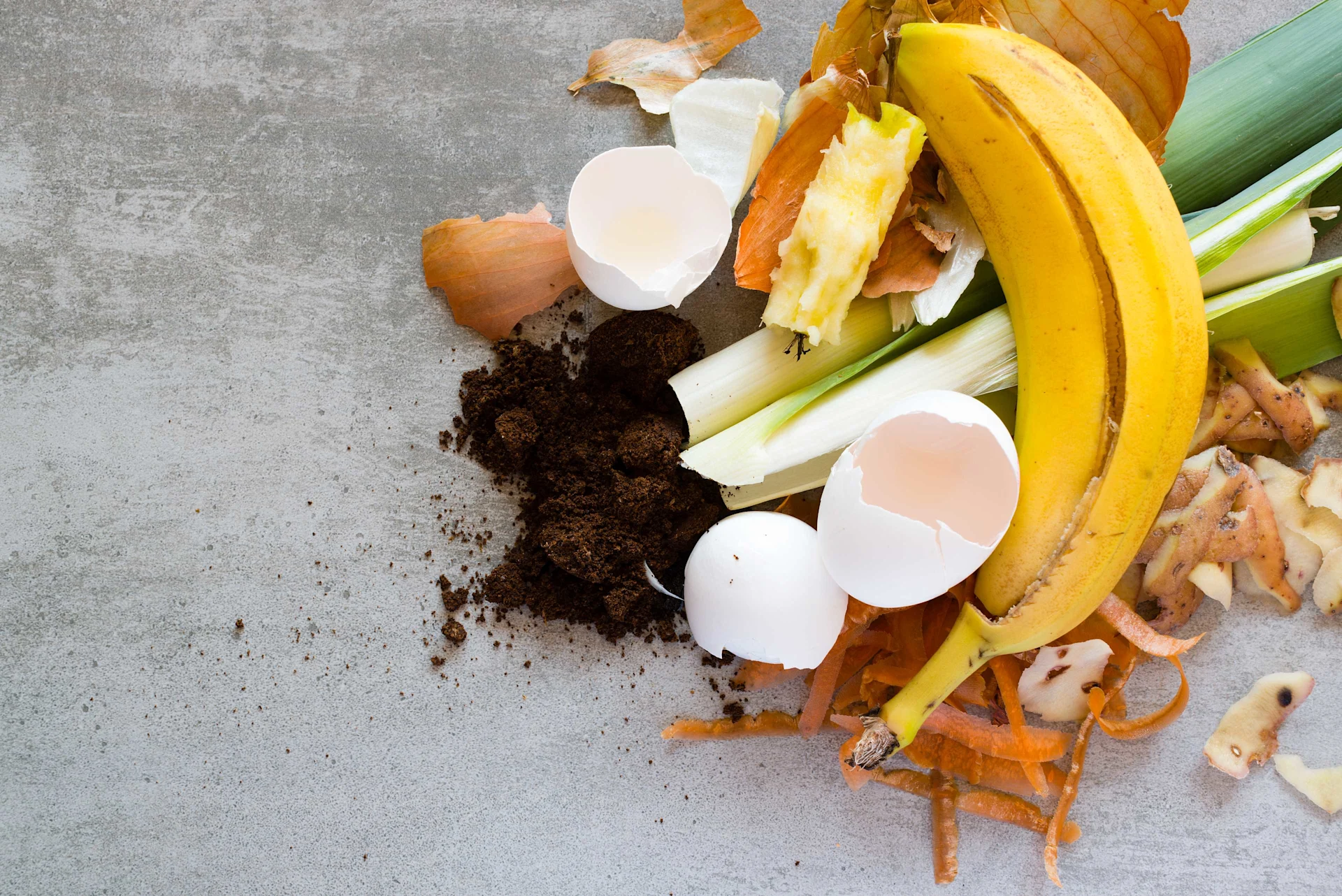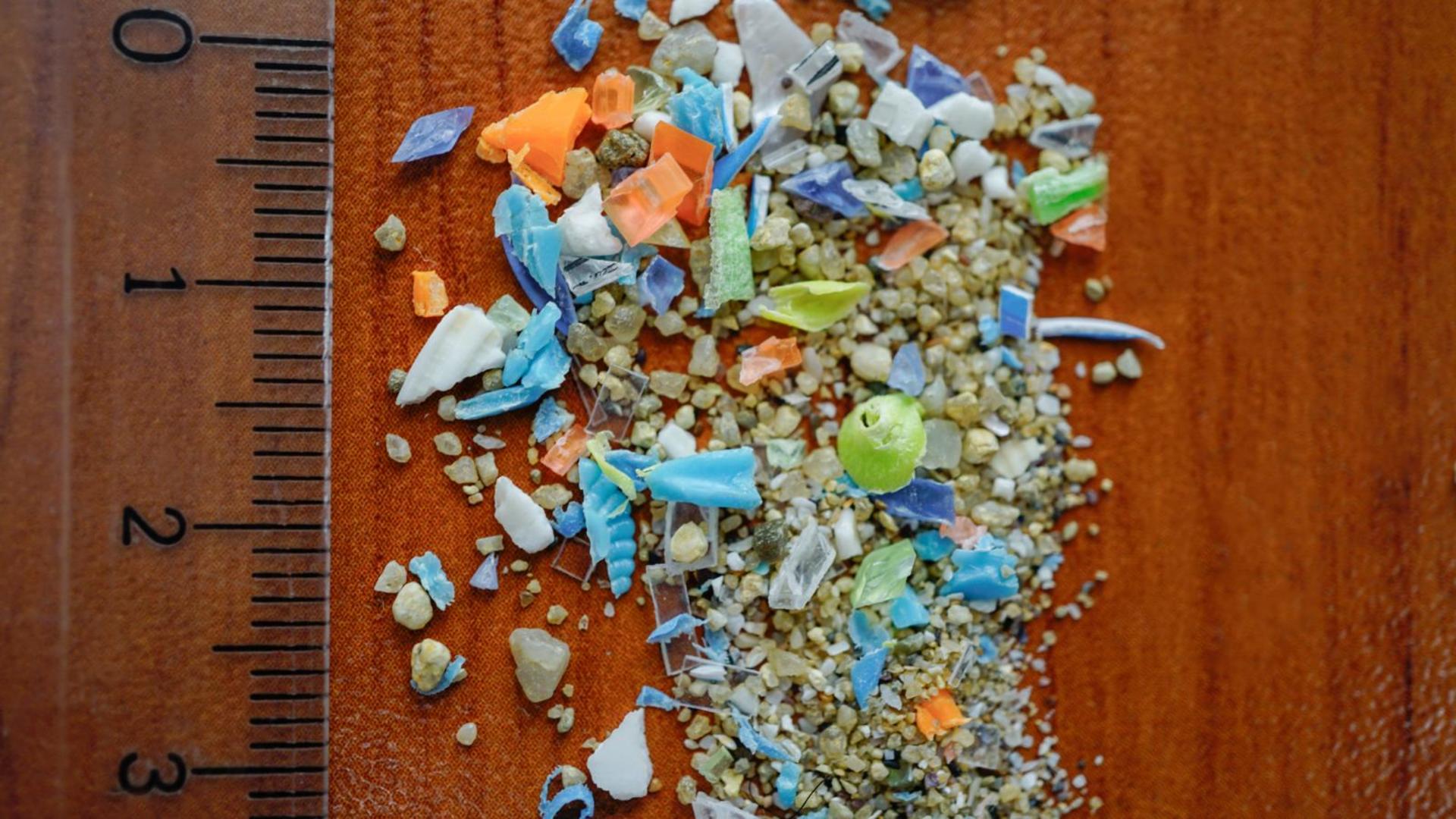
Food waste
What do you know about food waste?
Take part in the food waste quiz and find out how much you already know.
navigation

Sustainability
Many people still believe that plastic waste is mainly a problem in the seas and oceans. However, vast amounts of plastic can be found in every garden, field and stream – even in Switzerland. Most of the particles are so small that we can’t even see them.
Plastic particles larger than five millimetres are referred to as macroplastic. If these particles remain in nature for a considerable time, they disintegrate into smaller microplastic. If the particles continue to fragment, to the point where their diameter is less than one micrometre (0.001 millimetres), they are called nanoplastic.
Around 14,000 tonnes of plastic get into the environment in Switzerland every year. Almost two thirds of this, some 8,900 tonnes, is due to car tyres wearing down. The second-largest source is thoughtlessly discarded or left-behind waste, which accounts for 2,700 tonnes. A further 1,100 tonnes is attributable to plastic production and disposal, and the construction industry. Plastics from cosmetics or the washing of synthetic textiles in households also get into the environment via the sewage system. According to a new study by marine conservation organisation OceanCare, each person in Switzerland produces 95 kilograms of plastic waste per year on average.
Plastic survives for centuries. It therefore builds up everywhere – as shown in the pictures of huge plastic vortices in the oceans that were shared around the world years ago. But there are also huge amounts of plastic in the ground. A specialist laboratory commissioned by the magazine K-Tipp counted over 100,000 plastic particles in one kilogram of earth taken from a field in Felben-Wellhausen in the canton of Thurgau. In 2018, researchers from the University of Bern found microplastics in the ground in even the most remote mountainous regions.
There are also tiny plastic particles floating in the air! The wind blows them like dust into even the world’s most remote regions. At the end of their journey, they are flushed back onto the earth somewhere, primarily through rain and snow. Air pollution caused by microplastics is particularly high in indoor areas. That’s because tiny plastic particles are constantly breaking away from sofas, office chairs, toothbrushes and shoe soles, for instance.
Living tissue can’t stop microplastic. Plants absorb the tiny particles via their roots. Larger and smaller pieces of plastic have been found in the stomachs of sea creatures for many years. And a study from Australia revealed that each person swallows around 2,000 plastic particles per week without even realising it. That’s equivalent to around five grams in weight – or one credit card.
It is still largely unclear whether such foreign matter is a health risk. Some studies give the all-clear, with one of the reasons being that humans and animals excrete most of the absorbed particles again quickly without digesting them. The results of other studies are more worrying – for instance, the Swiss Federal Institute of Aquatic Science and Technology, Eawag, discovered that freshwater snails that ingested nanoplastic with their food were unable to reproduce. Plastic particles are also found in people, including in the blood – with a risk of inflammation of the vascular walls. In addition to this, chemicals are mixed into many plastics.
By not leaving behind or thoughtlessly discarding PET bottles and plastic bags, you can already do a lot for the environment. Bending down to pick up a piece of rubbish or even taking part in a clean-up day in the local community lets you make a larger contribution.
The amount of plastic waste generated by plastic coffee cups and plastic packaging for snacks should not be underestimated. Many cafés and food stalls will now serve take-away food or coffee in containers and cups that you bring with you. You can buy fruit and vegetables in reusable plastic bags or nets at the shop. Some selected Migros stores provide a bag for recycling plastic.
Plastic-free alternatives now exist for even more products. The Miobrill Greenline loofah sponge, for instance, is a purely plant-based household sponge from the loofah plant, which grows as a creeper in Asia, Australia and the South Pacific. It is ideal for replacing the traditional yellow cleaning sponge made of plastic.
Doing without your car is the classic environmental protection measure. It also helps reduce microplastic in the environment, as it prevents tyre wear. If you can’t get by without a car, you can try to avoid abrupt starts and emergency braking in order to reduce tyre wear.
Microfibres, nylon and polyester are present in many textiles. However, they release tiny plastic particles each time they are washed. This can be avoided by wearing clothes made of cotton, linen or viscose. Stores also sell washing bags that prevent fibres shedding from synthetics.
Discover exciting stories about all aspects of Migros, our commitment and the people behind it. We also provide practical advice for everyday life.